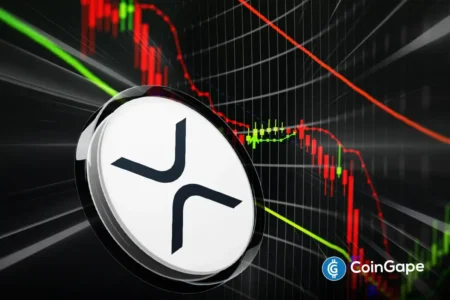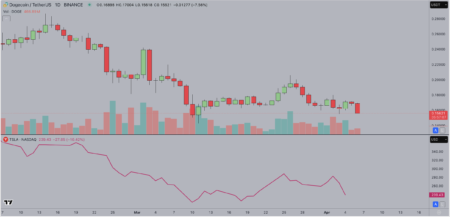Bitcoin Price Surges Amid U.S.–China Trade Tensions: A Strategic Shift for Investors
As of April 5, Bitcoin has managed to consolidate firmly above the $82,000 threshold, drawing significant investor interest amidst escalating trade tensions between the U.S. and China. Despite widespread volatility in traditional markets triggered by U.S. tariffs, Bitcoin’s resilience over the $80,000 mark has raised eyebrows among investors, suggesting a potential for a significant rally. This phenomenon indicates a pivotal shift in investor sentiment, as capital evacuates traditional equity markets and increasingly seeks refuge in cryptocurrencies like Bitcoin.
Understanding the Price Surge: The Factors at Play
The current price increase in Bitcoin can be attributed to several critical factors. First and foremost, Bitcoin’s neutrality in the context of sovereign conflicts ensures that it remains insulated from geopolitical events and tariff-related challenges. When nations engage in escalating trade disputes, investors often look for safe havens. Bitcoin, with its decentralized nature and lack of reliance on any single government, presents an attractive option for those seeking protection from market volatility.
Secondly, the looming risk of inflation, coupled with concerns over U.S. corporate earnings, further drives Bitcoin’s appeal. Unlike stocks, Bitcoin does not depend on a company’s earnings, making it a more stable investment during uncertain economic climates. As supply chains face disruptions due to the trade war, corporate revenues could suffer, prompting investors to pivot towards Bitcoin. Furthermore, its capped supply renders Bitcoin a robust hedge against inflation, reinforcing its status as a defensive asset amid rising economic pressures.
Geopolitical Uncertainty and Safe-Haven Demand
The escalating involvement of NATO and EU countries in ongoing geopolitical crises, such as the Russia-Ukraine conflict, has contributed to shrinking risk appetite in traditional markets, particularly within equities and government bonds. If diplomatic resolutions to trade tensions fail, further equity market declines, especially in tech stocks with global revenue exposure, could ensue. Bitcoin stands to benefit, as it absorbs capital displaced from retreating traditional assets. The cryptocurrency’s global accessibility and permissionless features make it increasingly appealing as a safe haven, cushioning investors against adverse economic repercussions.
Whale Activity and Its Influences on Price Stability
Recent data reveals a notable increase in Bitcoin whale transactions, with activity soaring by 120% in just one week. As larger investors recognize Bitcoin’s potential as a buffer against market turmoil, significant whale transactions have surged from $26.17 billion on March 23 to $47.27 billion by April 4. This substantial increase indicates that whale investors are actively acquiring Bitcoin, effectively counteracting the bearish sentiment stemming from retail investors’ panic selling during the trade war. This positive shift among whale investors not only stabilizes Bitcoin’s price but also reinforces its emerging role as an institutional hedge against broader market volatility.
Price Forecast: A Cautious Bullish Outlook for Bitcoin
Looking ahead, the price forecast for Bitcoin remains cautiously optimistic, despite a recent daily loss of 0.94% that closed at $83,100. The cryptocurrency continues to maintain critical support above the $83,000 level, resisting the macroeconomic pressures from trade disputes. Technical analysis highlights a minor bullish reversal, driven by a significant upswing along with the increase in whale transactions, suggesting that institutional investors are ready to absorb retail panic and support the price trajectory.
The convergence of the 5- and 8-day simple moving averages beneath current price levels hints at potential resistance around $84,532.52. Should Bitcoin sustain above $84,500, it may pave the way for retesting the $86,000 mark. However, any failure to maintain this upward momentum could prompt a revisitation of lower support levels around $82,000, necessitating caution amid this volatile landscape.
Conclusion: The Shift Towards Cryptocurrencies
In conclusion, Bitcoin’s recent surge amidst escalating U.S.–China trade tensions illustrates a significant pivot in investment strategies. As investors flee from traditional financial markets due to geopolitical uncertainties and inflation concerns, Bitcoin’s unique attributes position it as an increasingly secure asset class. The growing interest from large investors—coupled with Bitcoin’s decentralized nature—reinforces its appeal as a safe-haven asset. Moving forward, continued monitoring of economic and geopolitical developments will remain essential as Bitcoin’s role as a hedge in turbulent times solidifies, and institutional demand further solidifies its prospects.
















